15+ Beautiful Landscapes in Spain That Will Amaze You
Are you a nature lover looking for the most beautiful landscapes in Spain? You’re in the right place!
I love exploring the diverse natural landscapes across my country. Despite beaches and islands in Spain being very popular among travellers, there’s so much more than paradisiacal islands and pristine beaches. You can find deserts, volcanoes, mountains, and stunning lakes.
Whether you’re looking for the most famous landscapes in Spain or off-the-beaten-track natural spaces, in this guide, I’ve compiled some of the most impressive landscapes.

This post contains affiliate links, and as an Amazon Associate, I earn from qualifying purchases. If you click through and purchase something, I receive a small commission on the price at no extra cost to you. This helps me keep the content up to date and make other improvements to the blog.
Cliffs and beaches in Spain
Cabo de Gata, Almeria (Andalucia)

An underrated destination in Andalucia is Almeria, where you’ll find Cabo de Gata-Níjar, one of my favourite natural parks in Southern Spain.
You should visit Cabo de Gata for many reasons – its impressive rock formations, crystal clear sea, and wildlife make it a unique landscape.
Cabo de Gata is the place to be if you’re looking for virgin and unspoilt beaches. You’ll feel like you’re immersed in nature, very far from the touristy feeling and crowded beaches you can find in other Andalusian provinces.
Some unmissable spots in Cabo de Gata are Cala las Sirenas, Los Escullos and La Isleta del Moro, but no matter which area you visit in this natural park, you’ll be impressed by its uniqueness.
Depending on the time of the year, you can also spot flamingos in some areas.
📌Cristina’s Tip: If you don’t mind swimming in the sea and you want to hike or explore, visit Cabo de Gata in late spring or autumn to avoid crowds. This is the perfect time to enjoy the sunny weather, explore at your own pace and take incredible photos.
Cap de Formentor, Majorca (Balearic Islands)
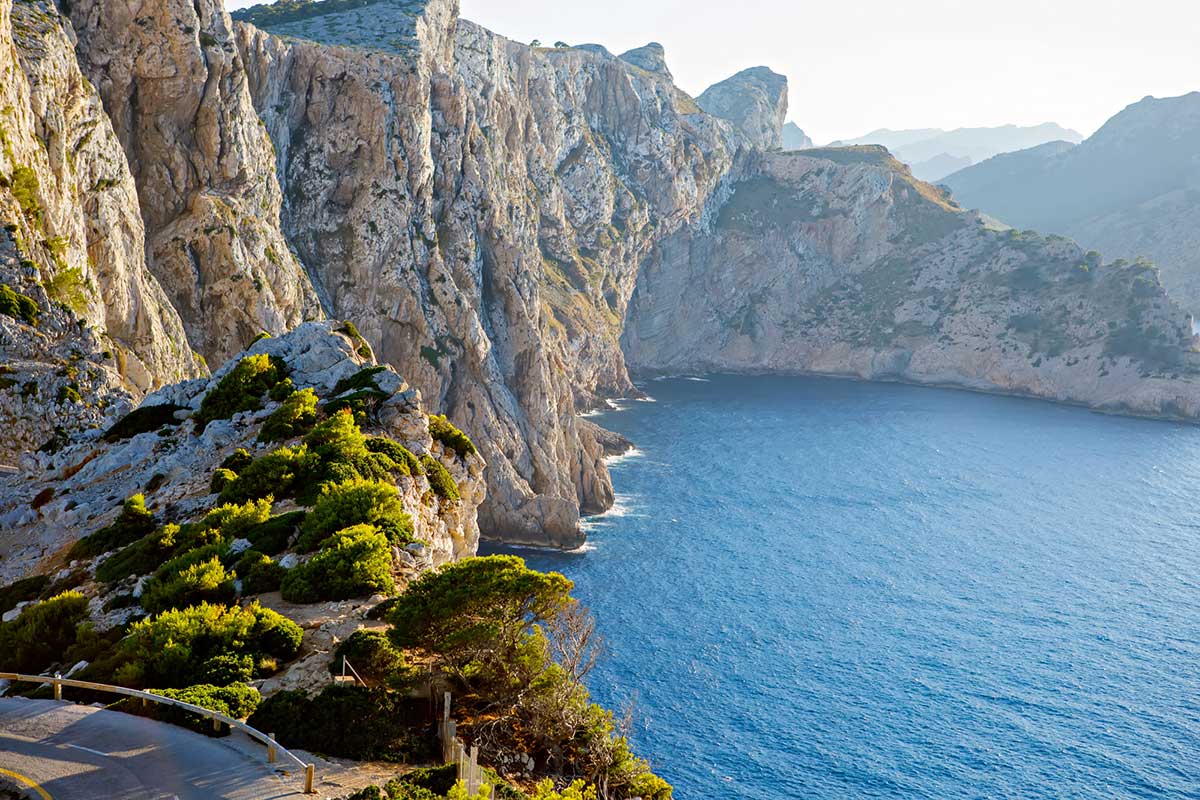
The Balearic Islands are home to some of the most breathtaking landscapes outside Spain’s mainland, and one of these is Cabo de Formentor (Cap de Formentor in Catalan).
Cap de Formentor is where the land and sea meet. This peninsula, located on the north side of Majorca, is home to panoramic viewpoints and cliffs, beautiful beaches and a lighthouse.
Unlike other parts of Majorca, Cap de Formentor is away from the tourist hotspots, which makes it a great hidden gem to discover during your trip to the Balearic Islands.
On this peninsula, you can relax and spend the day on its pristine and tranquil beach or go on one of the many hiking trails.
Its remote location is one of the charms of visiting Cap de Formentor; however, it’s still accessible by car and public transport.
If you opt to drive, it’s important to know that the drive is very winding and sometimes complicated, especially the road leading to the lighthouse.
Playa de Las Catedrales, Lugo (Galicia)

The coast of Galicia is packed with incredible rock formations – cliffs, arches and much more.
Playa de Las Catedrales, also known as Playa de As Catedrais, is one of the unmissable landscapes in Spain! Especially if you’re visiting Galicia or a nearby city like Oviedo.
Situated in Lugo, Playa de las Catedrales is home to breathtaking cliffs that eroded and formed arches, some of which are 30 meters tall.
This natural monument has become increasingly popular, and many travellers visit it every year. This is why it is essential you know when to see it.
To avoid crowds, avoid Playa de Las Catedrales during the summer months (July and August), Easter, and bank holidays. Also, check out the official website for times and dates, as this highly relies on the tide.
San Juan de Gaztelugatxe, Bilbao (Basque Country)
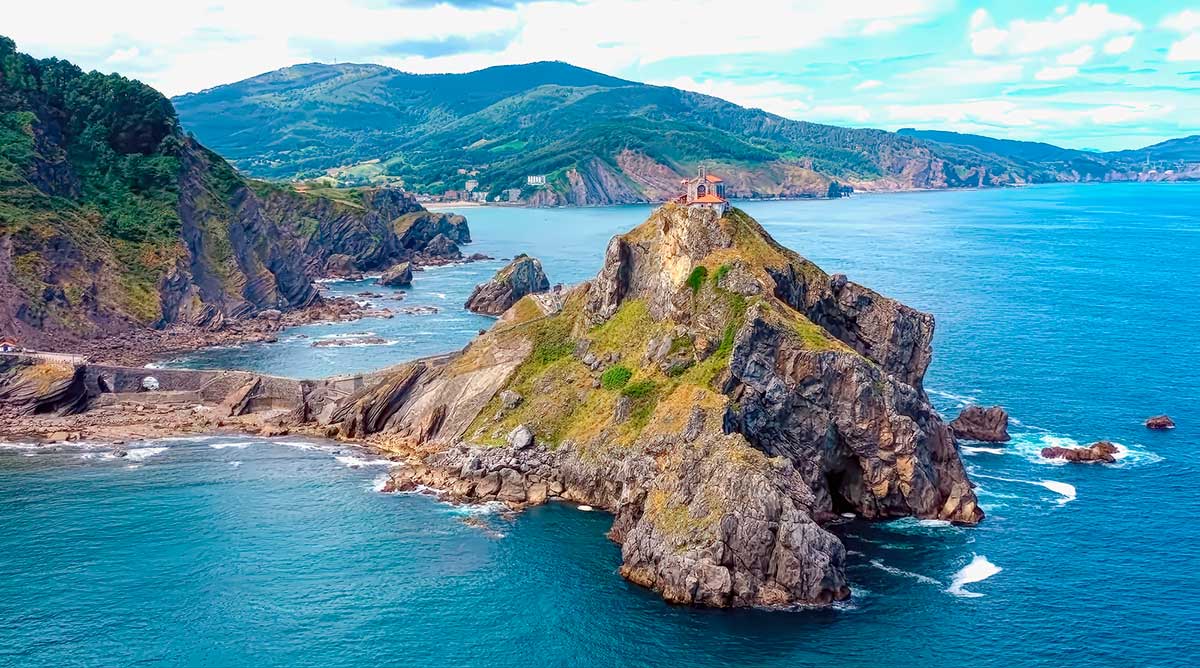
San Juan de Gaztelugatxe is a beautiful tiny island located about 40 minutes by car from Bilbao.
What makes this island unique is its connection to the mainland by a man-made stone bridge, followed by a path with 241 steps that zigzags to the top.
There’s a legend that says that when you reach the top, you need to ring the church’s bell three times to make a wish.
If you’ve watched season 7 of Game of Thrones, you’ll recognise this place, which is referred to as “Dragonstone.” Because of this series, this place has become more and more popular.
If you aren’t planning to rent a car during your time in Bilbao, you can either take a bus or go on a guided tour to San Juan de Gaztelugatxe.
📌Tip: Wear comfortable and waterproof shoes, as the path is sometimes slippery from the splashing of water.
Desert in Spain
Desierto de Tabernas (Almeria)
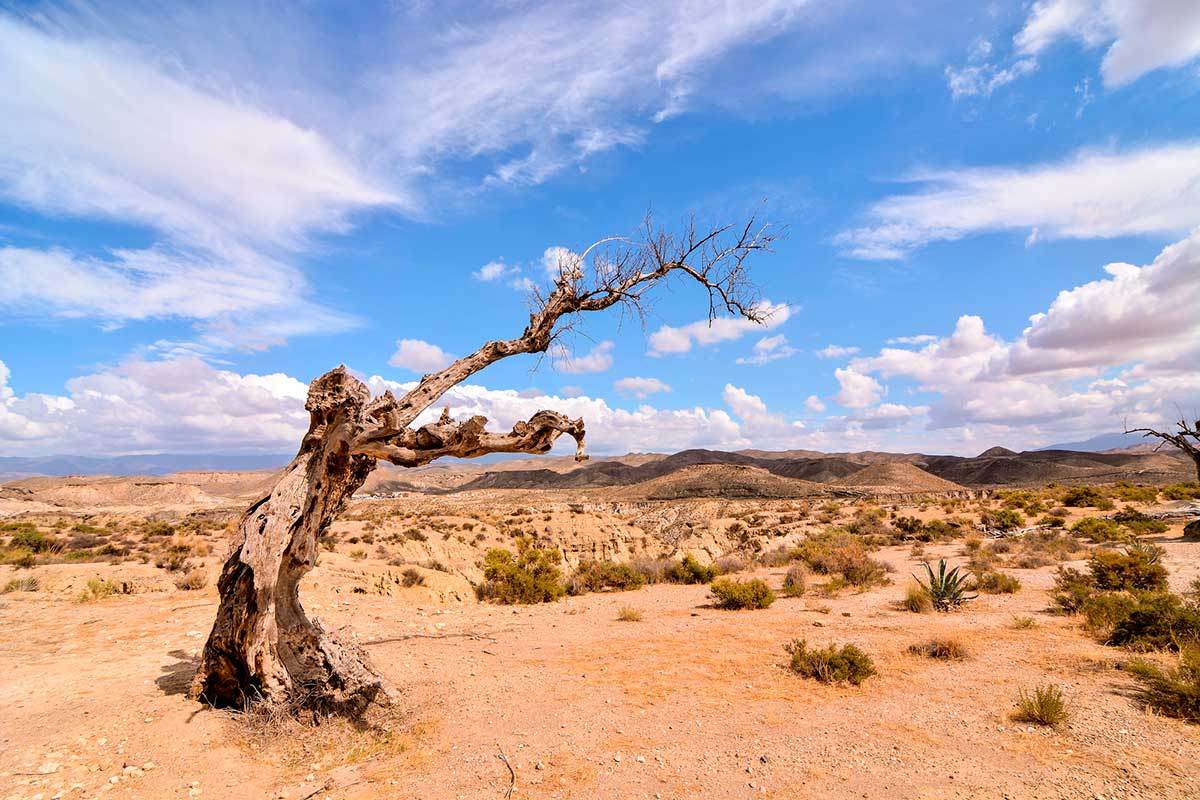
One of the most unique landscapes in Spain is the Tabernas Desert, located in the province of Almeria. It’s the only desert you can find in Spain and Europe.
Visiting this desert takes you to a different world. This 30-kilometre desert is a protected area since there are indigenous species and distinctive vegetation you won’t find anywhere else.
Some animals you can spot in the desert are Spanish hedgehogs, mountain goats, rabbits and hares, and birds like eagles and owls.
The desert is also home to a Mini Hollywood theme park inspired by the US Wild West.
Mountains in Spain
Caminito del Rey, Malaga (Andalucia)

One of the most impressive natural spaces near Malaga is Caminito del Rey (The King’s Little Path). This popular hiking trail is located only an hour’s drive from the city.
It consists of a walkway built in the steep walls of a narrow gorge in El Chorro. It used to be considered the most dangerous hiking trail in the world. However, this is no longer true as it has been adapted for visitors.
If you’re visiting Malaga or anywhere in Costa del Sol, you don’t really want to miss out on the opportunity to go on this unique trail. The mountain and river views are out of this world.
My biggest advice is to book your tickets in advance to avoid any disappointments. I tried to visit Caminito del Rey a few times, and the tickets were sold out two months before I was planning to go there!
Torcal de Antequera, Malaga (Andalucia)
Lesser-known than Caminito del Rey, Torcal de Antequera is another must-see landscape in Malaga province. Visiting Torcal de Antequera is an experience!
This UNESCO World Heritage Site is known for its unique rock formations that were created in the area many years ago. The sediments have been accumulating and forming layers.
El Torcal is very well signposted, so this will make your hike much better from the beginning. You can also stop by the visitor centre and museum before starting your walk.
Apart from enjoying the beautiful scenery of rocks and mountains, you may be lucky to see small animals like reptiles, birds and rabbits.
📌Cristina’s Tip: Don’t only go to El Torcal, but spend a weekend in Antequera. You can visit its underrated historical buildings and the Dolmens.
Tajo de Ronda, Malaga (Andalucia)

Tajo de Ronda is one of the most beautiful landscapes in the province of Malaga. It’s situated in the town of Ronda, an hour’s drive from Malaga, which makes it a great and easy day trip.
This Andalusian natural monument consists of a 140-meter-high gorge that divides Ronda into two parts and originated many years ago due to an earthquake.
Tajo de Ronda is divided into two parts – one goes to the Guadalevín River, and the other one opens onto a circular hollow.
It’s very impressive to see from different sides of the town, but especially from below, which you can access from Ronda’s viewpoint. This is a great spot for photography and birdwatching.
After visiting El Tajo, give yourself some time to explore the beauty of Ronda. The town has a few interesting museums, the oldest bull ring in Spain, and many bars and restaurants where you can enjoy local food and wine.
📌Cristina’s Tip: Don’t go to Ronda in the summer. Temperatures can reach up to 40 degrees Celsius, making hiking and sightseeing more difficult and tiring. The best time to visit Ronda is in autumn.
Sierra de Grazalema (Andalucia)

The Sierra de Grazalema Natural Park has incredible landscapes and nature you’ll want to see during your time in Andalusia.
The park is located just between the northeastern part of Cadiz and Malaga, so there are over 10 towns that lie within the park. I especially love Zahara de la Sierra, where I took the photo above.
Sierra de Grazalema is home to different types of landscapes – caves, mountain ranges, valleys and gorges. In addition to this, it’s a great place for birdwatching and seeing other animals unique to this area, like Payoya goats.
But the park is also known for its hiking trails. There are over 15 different types of walks you can do in this park, and each one offers a different landscape, but it’s guaranteed that you’ll be impressed by their beauty.
Covadonga (Asturias)
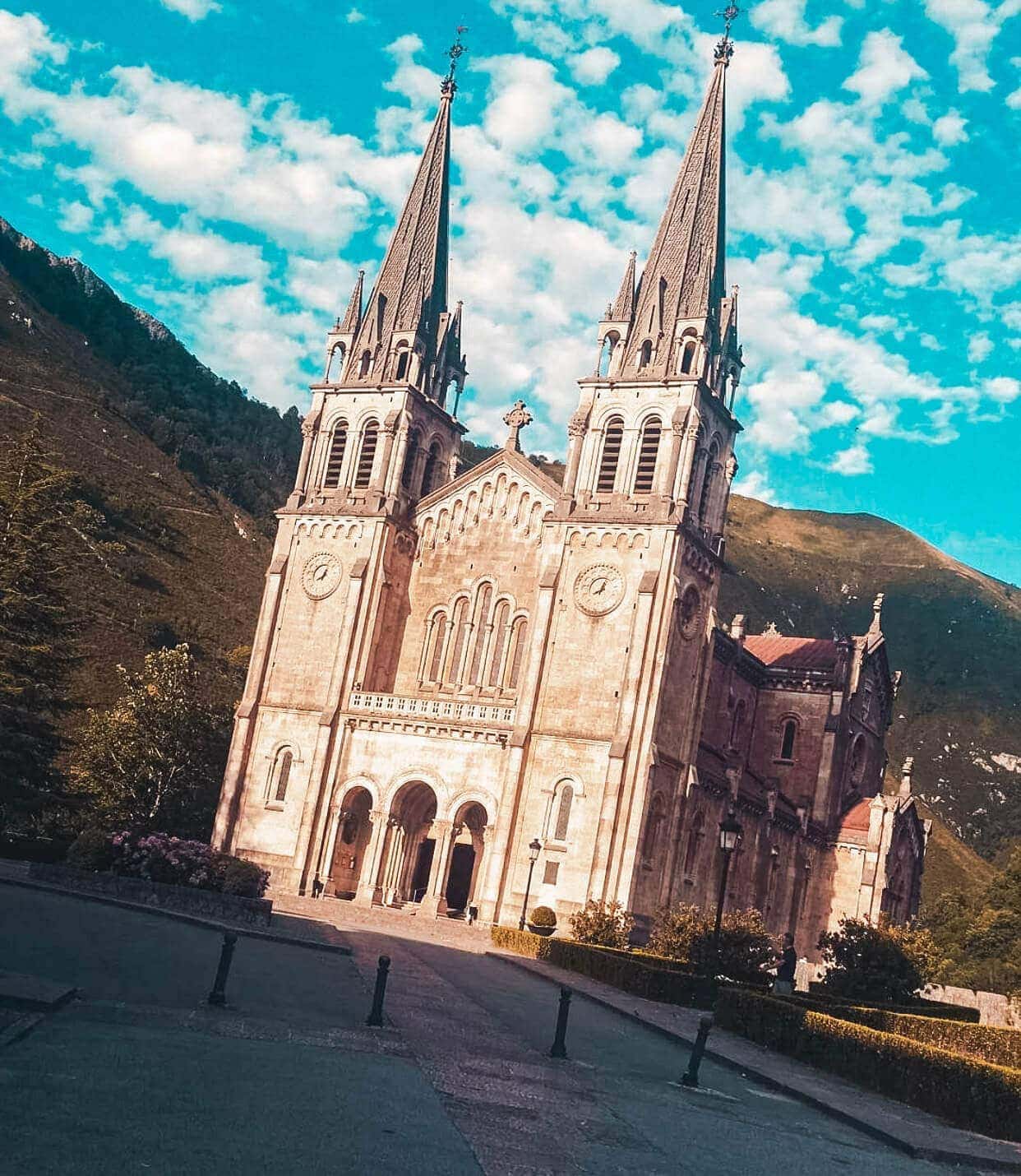
Lush green meadows, impressive lakes, and mountains are some of the beautiful natural features you’ll come across in Asturias. I absolutely love this part of Spain!
One of the most beautiful landscapes to see in Asturias is Covadonga, situated in the Picos de Europa, which is considered an impressive mountain range in Spain. This place seems out of a fairytale film or book.
Go on a hiking trail through the lush meadows or visit the Sanctuary of Covadonga.
The latter comprises Basílica de Santa María la Real de Covadonga church, Santa Cueva de Covadonga, known as the holy cave, Collegiate church of Nuestra Señora de Covadonga and Monasterio de San Pedro.
If you visit Asturias and want an escape from city life, this is the perfect place.
Montserrat, Barcelona (Catalonia)
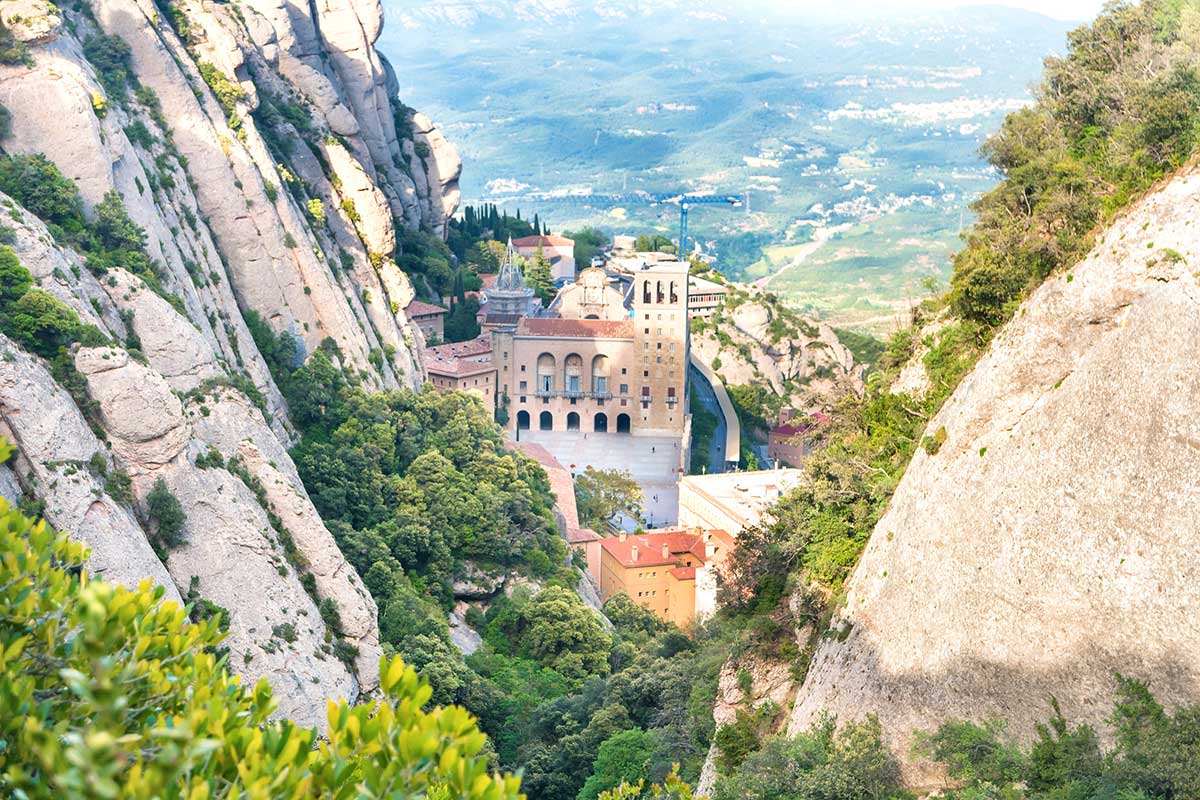
Montserrat is a must-see landscape when you’re visiting Catalonia. This is an impressive mountain range, 1,236 metres above sea level, located an hour from Barcelona.
Montserrat is home to a monastery (Santa Maria de Montserrat), a cable car, and museums that make it a great short-day trip from Barcelona.
Although you can always spend more time there by going on a hike, which is unsurprisingly the best thing to do in Montserrat or climbing.
If you’re planning a day trip to Montserrat from Barcelona, the best way to get there is by taking the train or by doing a guided tour.
If you’re wondering whether you can stay overnight in Montserrat, there are a few hotel options. By staying there, you can always wake up early and beat the crowds, as it can get busy!
Camino de Santiago (Northern Spain)

Camino de Santiago (the Way of St. James) is Spain’s most famous hiking trail. It’s a pilgrimage route to Santiago de Compostela, Galicia.
However, Camino de Santiago isn’t only one route but is a network of hiking routes that take you through lush green landscapes that will steal your heart.
Many people believe this hiking trail is only for experienced hikers, but the reality is that anyone can make this trail, as you can start from different points and spend more time in some areas than others.
Camino de Santiago is definitely one of those walks you need to add to your Spain bucket list.
📌Tip: The best time to go on Camino de Santiago is in late spring and early summer. July and August are the busiest months, so consider avoiding them for a less crowded walk and to save money on accommodation.
Sierra Nevada, Granada (Andalucia)
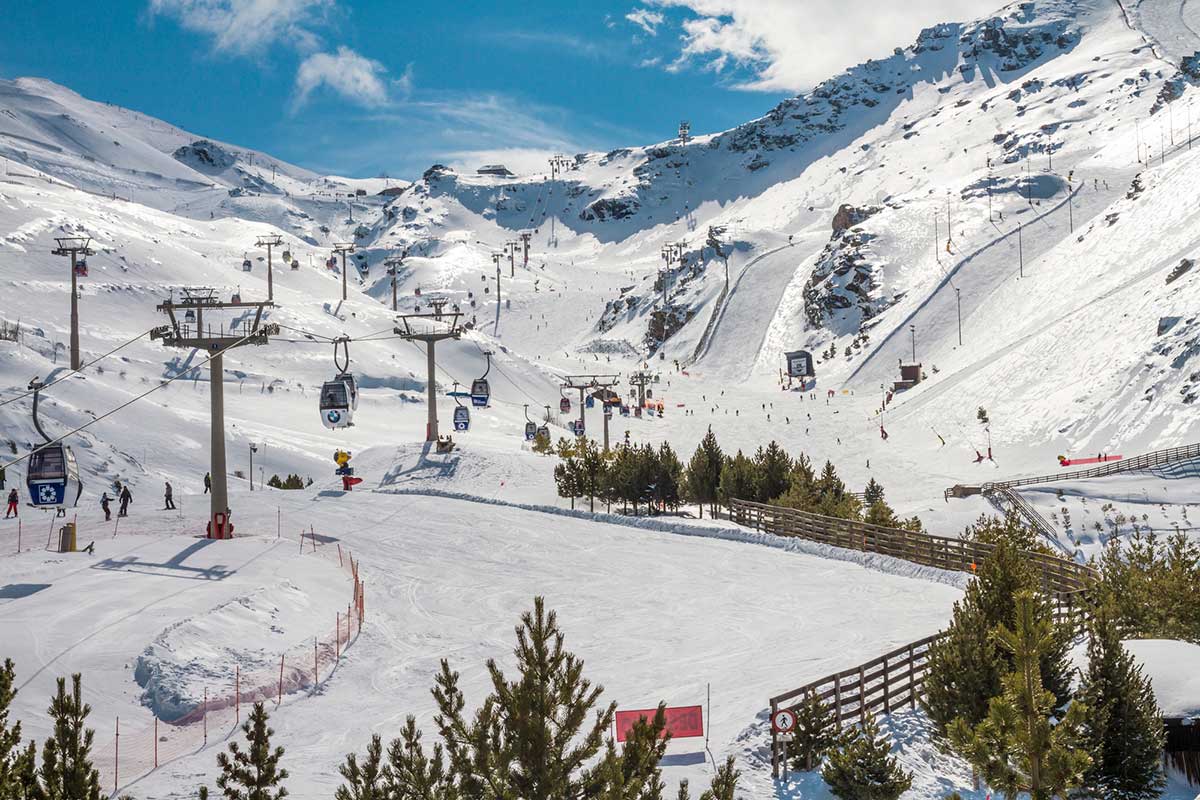
Many travellers think Andalucia has very dry and warm weather; this is true, but you can also find colder temperatures and snow in the mountain areas.
Sierra Nevada, a 40-minute drive from Granada, is a mountain range and ski resort where you’ll see the highest mountain in Spain, Mulhacén, which is 3,479 metres tall.
This is the perfect place to enjoy a winter getaway in Europe, ski and admire the beautiful scenery of snowy mountains in the middle of Andalucia.
Next to Sierra Nevada, you can visit the Alpujarras region, which consists of several whitewashed villages in the mountainside. They’re unique and have something to offer. One of my favourites is Soportujar, known as the haunted village.
📌Cristina’s Tip: Sierra Nevada is a great place to disconnect, and many hotels have spa facilities. El Lodge is the best hotel to stay in Sierra Nevada if you want to treat yourself to a relaxing holiday by enjoying its beautiful outdoor swimming pool that overlooks the mountains.
La Pedriza (Madrid)
Located in the northwest of Madrid, in the Manzanares nature park, you’ll find La Pedriza, a geological feature on the Guadarrama mountain range.
It’s one of Europe’s most impressive granitic ranges and has numerous peaks, cliffs, streams and meadows.
If you love a good hike, don’t miss out on the opportunity to go on a hike in La Pedriza. I recommend going to the visitor centre to obtain information on routes and itineraries to follow.
The fauna is sparse and dry, but you may spot some animals, as this is home to many birds of prey, like vultures.
Volcanoes in Spain
Teide, Tenerife (Canary Islands)

Teide National Park is the biggest park on the Canary Islands, and a nature treasure – craters, volcanoes, and rivers of petrified lava are some of the unique features of this impressive landscape.
There is no visit to Tenerife without exploring Teide National Park. This UNESCO World Heritage Site has incredible natural features and the highest peak (Mount Teide) in Spain.
Walking across the park is a true experience as you encounter geological treasures and different types of flowers and plants.
Lakes in Spain
La Laguna de Torrevieja (Alicante)

Have you ever heard that Spain is home to a pink lake?
La Laguna de Torrevieja, situated in Alicante, is one of the natural wonders you wouldn’t expect to find in Spain or Europe, but on other continents.
The Pink Lake of Torrevieja is in the Nature Park of Lagunas de la Mata and Torrevieja.
Contemplate its eye-catching bubblegum pink colours, spot flamingos and go to the interpretation centre to discover more about this unique place, which, interestingly, is a significant producer of salt in the country.
Frequently asked questions about landscapes in Spain

What are the most beautiful landscapes in Spain?
Some of the most impressive landscapes include Cap de Formentor in Majorca, Cabo de Gata in Almeria, Tajo de Ronda in Malaga and Covadonga in Asturias. However, every landscape has something unique, and you’ll find different landscapes, nature and wildlife across Spain and in Spain’s mountains.
Which natural hidden gems in Spain can’t I miss?
San Juan de Gaztelugatxe, Cabo de Gata and Los Órganos. These are three beautiful hidden gems in Spain that you can’t miss. Not only are they unique, but they are less crowded, too.
Conclusion on the most beautiful landscapes in Spain
Overall, Spain has every type of landscape you can find in the world – from pristine beaches and sand dunes to high-peak mountains, waterfalls and volcanoes.
Another essential thing to remember is that no matter which natural space you decide to visit, check the weather conditions and wear comfortable clothes and shoes to explore it and make the most of your time.
At the same time, the best way to get to these places is by rental car. Many of them can’t be accessed by public transport or may have limited timetables.
Have any of these reasons convinced you to visit any of these incredible landscapes in Spain? If so, which one are you visiting first? Let me know in the comments below!
Safe adventures!
Cristina xx
Save these beautiful landscapes in Spain on Pinterest for later


Things to do before visiting Spain
- Get more specific travel inspiration by looking at these Spain travel guides.
- Check cheap flights with Skyscanner.
- Book the best accommodation for you with Booking.com
- Rent a car to move around Spain with ease.
- Don’t forget to buy travel insurance for your trip.
Read more about Spain
- Top Tips for Travelling in Spain for the First Time
- Best Places to Visit in Spain for First Timers
- Best City Breaks in Spain
- Hidden Gems in Spain You Need to See
- The Most Romantic Places in Spain
- What to Wear in Spain in Winter (Packing list included!)
- Does It Snow in Spain?
- Original Spain Themed Gifts For People Who Love Spain
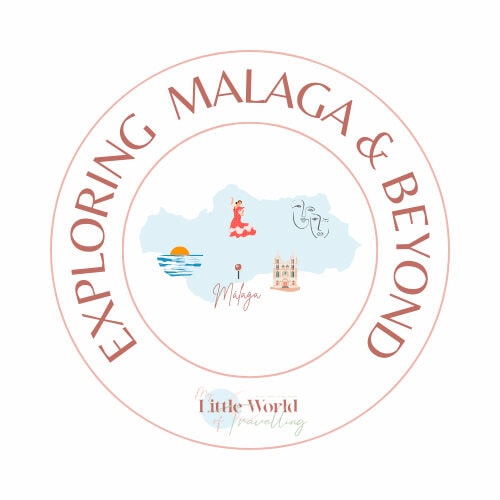

Spain is such a beautiful country! I lived there for 8 months before the pandemic and I want to go back so badly to see more. Thank you for sharing!